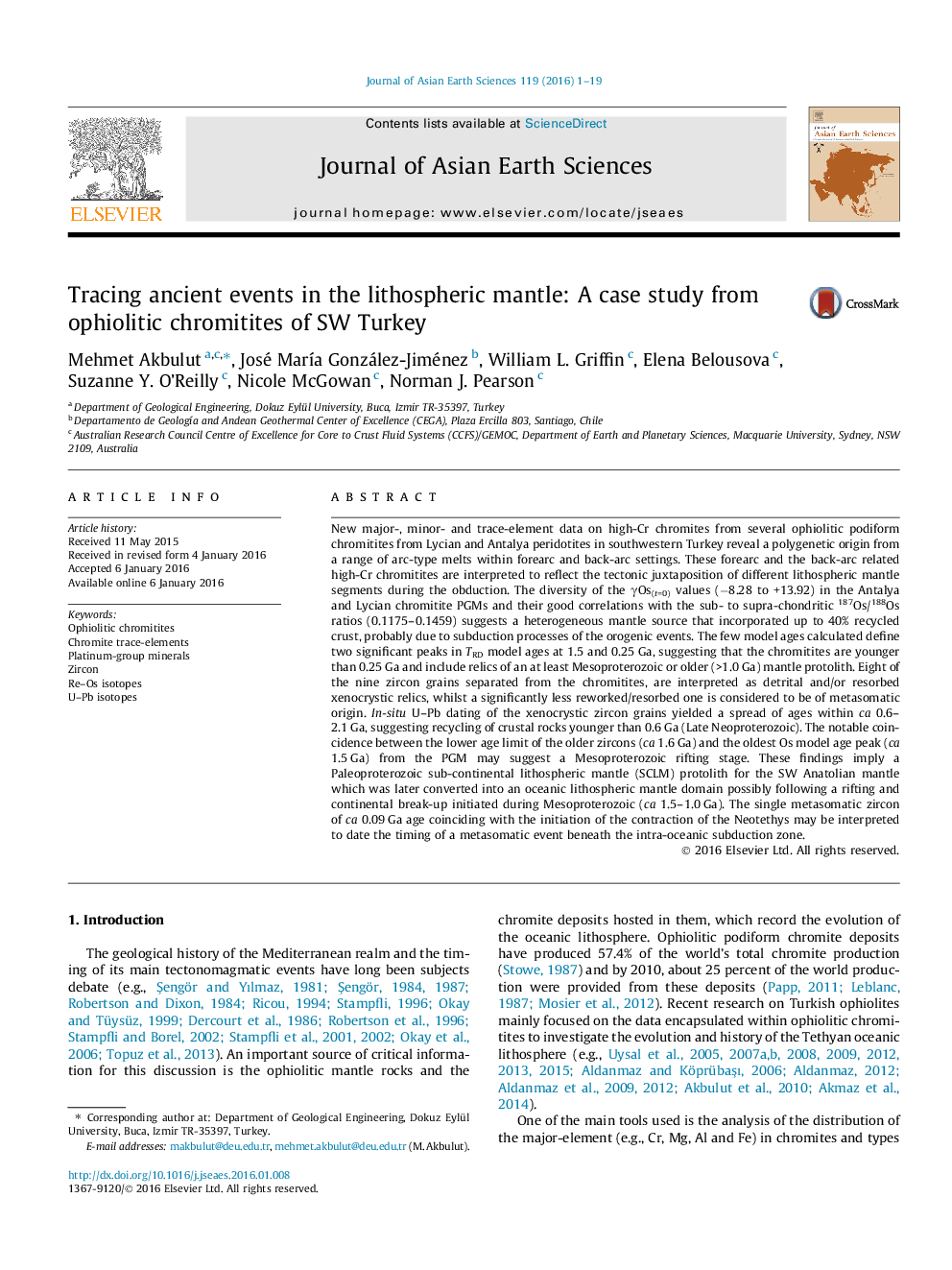| کد مقاله | کد نشریه | سال انتشار | مقاله انگلیسی | نسخه تمام متن |
|---|---|---|---|---|
| 4730096 | 1640352 | 2016 | 19 صفحه PDF | دانلود رایگان |

• The SW Anatolian chromitites present SSZ arc-related and polygenetic origin.
• In-situ Os isotopes point to a heavily modified source via up to 40% crustal input.
• Based on the TRD ages of PGM, these chromitites should be no older than 0.25 Ga.
• U–Pb ages from zircon xenocrysts and TRD ages of PGM imply a Paleoproterozoic SCLM.
• Young metasomatic zircon implies timing of metasomatism beneath the Neotethyan SSZ.
New major-, minor- and trace-element data on high-Cr chromites from several ophiolitic podiform chromitites from Lycian and Antalya peridotites in southwestern Turkey reveal a polygenetic origin from a range of arc-type melts within forearc and back-arc settings. These forearc and the back-arc related high-Cr chromitites are interpreted to reflect the tectonic juxtaposition of different lithospheric mantle segments during the obduction. The diversity of the γOs(t=0) values (−8.28 to +13.92) in the Antalya and Lycian chromitite PGMs and their good correlations with the sub- to supra-chondritic 187Os/188Os ratios (0.1175–0.1459) suggests a heterogeneous mantle source that incorporated up to 40% recycled crust, probably due to subduction processes of the orogenic events. The few model ages calculated define two significant peaks in TRD model ages at 1.5 and 0.25 Ga, suggesting that the chromitites are younger than 0.25 Ga and include relics of an at least Mesoproterozoic or older (>1.0 Ga) mantle protolith. Eight of the nine zircon grains separated from the chromitites, are interpreted as detrital and/or resorbed xenocrystic relics, whilst a significantly less reworked/resorbed one is considered to be of metasomatic origin. In-situ U–Pb dating of the xenocrystic zircon grains yielded a spread of ages within ca 0.6–2.1 Ga, suggesting recycling of crustal rocks younger than 0.6 Ga (Late Neoproterozoic). The notable coincidence between the lower age limit of the older zircons (ca 1.6 Ga) and the oldest Os model age peak (ca 1.5 Ga) from the PGM may suggest a Mesoproterozoic rifting stage. These findings imply a Paleoproterozoic sub-continental lithospheric mantle (SCLM) protolith for the SW Anatolian mantle which was later converted into an oceanic lithospheric mantle domain possibly following a rifting and continental break-up initiated during Mesoproterozoic (ca 1.5–1.0 Ga). The single metasomatic zircon of ca 0.09 Ga age coinciding with the initiation of the contraction of the Neotethys may be interpreted to date the timing of a metasomatic event beneath the intra-oceanic subduction zone.
Figure optionsDownload as PowerPoint slide
Journal: Journal of Asian Earth Sciences - Volume 119, 1 April 2016, Pages 1–19